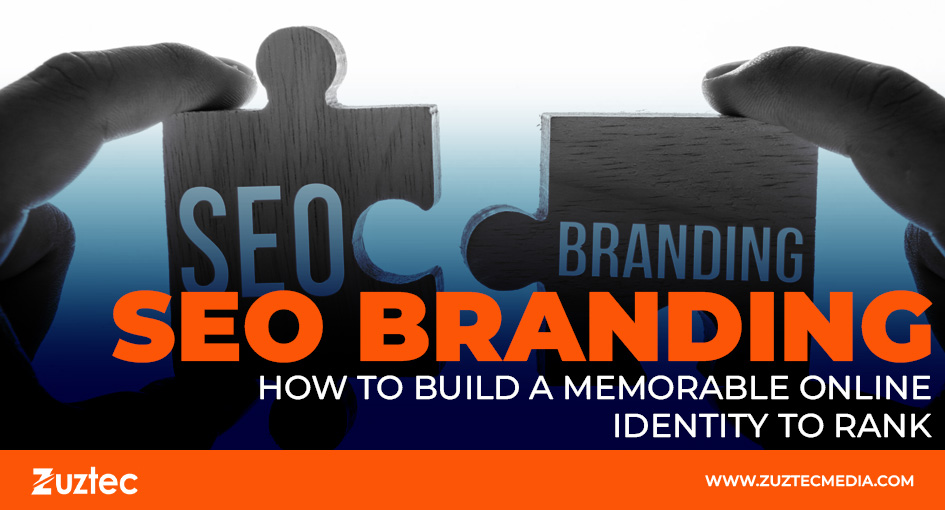
SEO Branding: How to Build a Memorable Online Identity To Rank
In today’s digital-first world, being discoverable online isn’t just about ranking on Google—it’s about making an impression that lasts. Brands are competing not only for attention but also for loyalty and trust. That’s where SEO branding steps in, combining the technical world of search engine optimization with the emotional power of branding. Together, they help businesses not only get found but also remembered.
It’s no longer enough to just appear in search results. Modern consumers want to engage with brands they resonate with—ones that reflect their values, solve their problems, and deliver consistent messaging across all platforms. With Optimized branding, businesses have a strategic method to ensure their online identity is not only visible but also magnetic. It’s where visibility meets credibility, and ranking turns into recognition.
What Is SEO Branding?
The Marriage of SEO and Brand Identity
Search Engine Optimized branding is the fusion of two powerful marketing disciplines: search engine optimization and brand development. While SEO focuses on increasing website visibility through keyword optimization, technical performance, and content creation, branding ensures that a business has a clear voice, tone, visual identity, and value proposition. When combined, they allow businesses to consistently show up in search results while leaving a lasting impression on potential customers.
Think of it this way: SEO gets people to your door, and branding is what makes them want to come inside, stay, and eventually return. The goal of branding is to create a digital presence that is not only discoverable but also differentiated and trustworthy.
Why It Matters in 2025 and Beyond
The digital landscape is evolving at lightning speed. With AI, voice search, and personalized content experiences on the rise, traditional SEO practices are no longer enough. Google’s algorithms are increasingly prioritizing authoritative, trustworthy content—signals that are also cornerstones of strong branding.
Moreover, customer behavior has changed. Today’s consumers are less likely to trust generic brands or faceless companies. SEO branding meets this demand by ensuring that your brand identity is woven into every keyword, every piece of content, and every touchpoint online.
Core Components of an Effective Branding Strategy
Keyword Strategy with Brand Intent
Traditional keyword research focuses on identifying high-traffic terms. But in branding, the emphasis shifts to brand-aligned keywords—terms that reflect not only what your audience is searching for but also how they perceive and connect with your brand. This includes branded keywords (like your business name), mission-driven phrases, and niche terms that set your voice apart.
For example, a cruelty-free skincare brand won’t just optimize for “face moisturizer” but also for “vegan face cream” or “cruelty-free moisturizer,” tying their values directly into their keyword strategy.
Consistent Messaging Across Channels
When your SEO and branding teams work in silos, your messaging can become fragmented. SEO branding ensures every blog post, landing page, and product description reflects a unified tone and style. This consistency builds brand recognition and helps search engines understand what your brand is about.
Take a company like Patagonia. Whether you land on their product page, blog, or Instagram, the voice is unmistakably bold, socially conscious, and environmentally focused. That consistency is not accidental—it’s strategic.
Benefits of Integrating Branding with SEO
Enhanced Trust and Authority
Search engines reward websites that are authoritative, and branding plays a critical role in establishing that authority. A well-branded website with original content, clean UX, and social proof sends strong E-E-A-T (Experience, Expertise, Authoritativeness, and Trustworthiness) signals to Google.
Trust also impacts user behavior. When users recognize a brand in the search results, they’re more likely to click through and engage. Over time, this higher click-through rate (CTR) and lower bounce rate contribute to better rankings—a virtuous cycle that SEO branding helps initiate.
Increased Click-Through Rates
A strong brand presence can elevate your appearance in the SERPs (search engine results pages). Even if you’re not the top result, users might still click on your link because your name carries weight or familiarity. Incorporating your brand into meta titles, descriptions, and URLs reinforces your presence in the minds of consumers and encourages higher CTR.
Better Content Strategy and User Engagement
When branding guides your SEO content, you’re more likely to produce material that connects with your audience. Instead of chasing traffic with clickbait or keyword-stuffed blogs, your content can speak directly to user intent—answering questions in your brand’s voice, addressing pain points with empathy, and offering solutions in a tone that resonates.
Content becomes not just informative but memorable. And memorable content gets shared, bookmarked, and revisited, all of which are positive engagement signals for SEO.
Ultimately, as the online marketplace grows more crowded and competitive, businesses need more than visibility—they need resonance. That’s the true promise of SEO branding: to show up not just on search engines, but in the minds and hearts of your audience.
By aligning your SEO strategies with a clear, consistent, and compelling brand identity, you lay the foundation for long-term digital success. It’s not about choosing between traffic and trust—it’s about combining the two to create a sustainable and scalable presence. In a world where algorithms change constantly, your brand remains your most valuable SEO asset.

